13 Nights / 14 Days
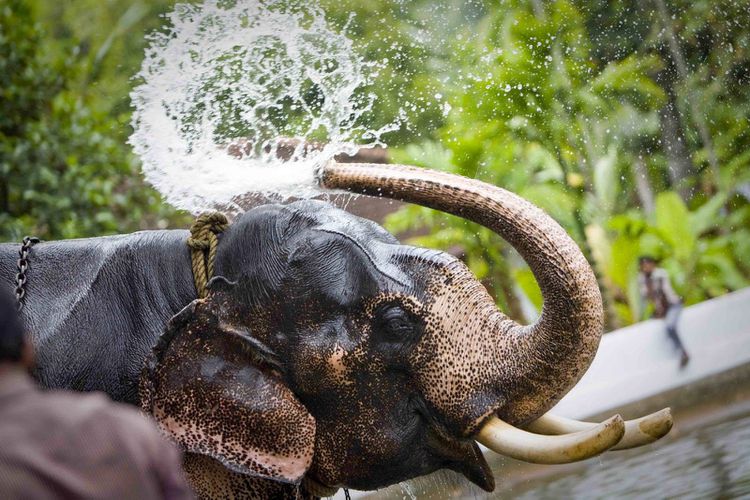
Birdwatchers visiting Sri Lanka will find a wide variety of fascinating bird species there. Any visitor who enjoys watching birds would wish to observe all or many of these species and add any new birds (also known as "life birds") to their "life list." The species indigenous to Sri Lanka, several other unique residents, including the species endemic to both India and Sri Lanka, species primarily restricted to Asia, and certain migrants from North India and Central Asia are all included on the prospective "life bird" list. The fact that most migrants from the Northern Indian region are easier to spot in Sri Lanka than in India may be interesting to know. In addition to these unique birds, Sri Lanka is home to numerous other species with a wider spread.
465 different bird species have been officially documented in Sri Lanka. Rasmussen and Anderton (2005) published a recent taxonomic revision of South Asian birds that designates 225 species as being endemic to the region, of which 34 species are now endemic to Sri Lanka, including the recently discovered Serendib Scops-owl Otus thilohoffmanni. There are additional 54 species in the nation that are unique to Sri Lanka and India.
Other than Asian Elephants and Leopards, Sri Lanka has a variety of fascinating animals to offer keen mammal watchers. To far, 126 species of land mammals have been identified in Sri Lanka, including 21 endemic species.
According to the species the client requests, particular places in the provided itineraries can be replaced and/or added to create the customized tour. Our team members have specialized knowledge of these locations to locate the elusive and nocturnal species, giving mammal watchers a better chance of discovering these fascinating creatures.
Your ground personnel will greet you at Bandaranaike International Airport and drive you to the Goldi Sands hotel in Negombo. Arrive at your accommodation, then enjoy the rest of the day at your own.
After breakfast, leave Negombo and go to Kitulgala, a stunning region in the west, for our first birding destination (4 hours drive). Bird watching along Sri Lanka's roadsides is great.Blue-tailed Bee-eaters, White-throated Kingfishers, White-bellied Drongos, Sri Lanka Swallows, Scaly-breasted Munias, Brown Shrikes, Indian Jungle Crows, Yellow-billed Babblers, Oriental Magpie-Robins, and Ashy Woodswallows are among the birds that are regularly seen on wires.Even though we will definitely come across them frequently, it will be difficult to escape these roadside temptations.Because of the odd Crested Serpent Eagle and Changeable Hawk-Eagle sentinels perched atop poles, our car will most likely come to a stop.Of course, the more common waterfowl won't be ignored either, including the Red-wattled Lapwing, Indian Pond Heron, Eastern Cattle Egret, Intermediate Egret, Black-winged Stilt, and Asian Openbill.
Due to all these leg-stretching pauses, it will be close to midday by the time we get at The Plantation Hotel, which is our overnight accommodation and is situated in a well-wooded garden with views of the Kelani River and the iconic '50s Hollywood movie "The Bridge on the River Kwai." After the first of many rice-and-curry dinners, we will begin our quest for the island's endemics in the lush garden of our resort. Our attention will probably be drawn to the Yellow-fronted Barbet's powerful cry, which is a typical element of the soggy Sri Lankan hinterland's soundtrack.
In the beautiful garden of our resort, we will start our search for the island's endemics after the first of many rice-and-curry dinners.
Roadside bird watching in Sri Lanka is a lot of fun.
The rhythmic morning song of a Spot-winged Thrush can usher in a new day. Additionally, it can rush in at first dawn in search of a quick meal. Brown-capped Babbler flocks can be identified by their low flight patterns and distinctive "pretty-dear" scream, which is likely to be audible in the undergrowth. If you can well, Indian Pitta, a Himalayan delicacy, could not be too far away. The dawn chorus, which includes further songs from the aforementioned thrush, Green Warbler, Large-billed Leaf Warbler, Tickell's Blue Flycatcher, and other species as well as harsher greetings from Chestnut-backed Owlet, may reach its peak as the day grows lighter.
Our morning's birding will greatly increase our trip list with species including the Oriental Dwarf Kingfisher, Sri Lanka Drongo, Lesser Yellownape, Indian Paradise Flycatcher, Black-naped Monarch, Black-capped Bulbul, Indian White-eye, and Sri Lanka Grey Hornbill. We will cross the Kelani River in search of more priceless gems. The first of these is the Serendib Scops Owl, which was discovered in 2001 and has an estimated natural population of 200–250 birds. At a roost, we'll look for it all day.
After some early morning birding and morning meal, we will go to the spectacular Sinharaja Forest Reserve, a UNESCO World Heritage Site. In Sri Lanka, this region has the longest stretch of lowland rain forest and is home to many rare species. Make it to Blue Magpie Lodge in time for lunch; this is where you'll be spending the next three nights. One of the pleasures of birding in Sinharaja is observing mixed-species bird groups, a strategy employed by birds in the tropics to improve feeding efficiency and reduce the risk of predation. The Orange-billed Babbler and Sri Lanka Drongo are most likely to be in charge of these flocks.
With a breakfast in hand, we will arrive at Sinharaja's ticket office and begin our journey into this endemic hot spot in quest of our objectives. One of these is the native Sri Lankan Wood Pigeon, which visits Sinharaja in search of the appropriate fruits in season. Other bonus birds like the Sri Lanka Hill Myna, Indian Blue Robin, Slaty-legged Crake, and Indian Cuckoo will come our way if we take the right approach. Observing an Indian Paradise Flycatcher with its nearly foot-long, white tail streamers that resemble ribbons would be feasible if we come across a good flock. The Chestnut-winged Cuckoo, another migratory that joins groups, may present a more challenging task, though, due to its rarity.
Today, get up early and travel to the Ketellepattala Road, a jungle road that runs beside a rain forest. Bring a packed breakfast with you. A vehicle will be used to navigate this rough path, and you'll pass homesteads where people cobble together a life from the forest's bounty. The residences here cultivate modest amounts of tea as a source of food, and the locations where the forests meet the dwellings and open spaces are suitable for mixed groups of birds that pass by while consuming insects.
At the end of the road, there is a homestead where you may hide while you wait for the elusive and reticent Sri Lanka spurfowl to fly by its backyard's woodland enclosure, as it does every morning. If you want to get a good look at this endemic, it's crucial to keep quiet and be calm. They frequently make their presence known with a cacophonous call before they actually show there.
The indigenous Chestnut-backed Owlet and Green-billed Coucal are also frequently seen in this area. The beautiful Serendib Scops Owl, the most coveted endemic in this region, would also have been discovered by your village tracker. Its call may frequently be heard early in the morning before dawn, and you would then be brought to its daylight roost. Naturally, luck plays a role in this, thus nothing in nature can be guaranteed.
After lunch, head back to your accommodation and continue birding both inside and outside the national reserve.
We will travel to Mirissa on Sri Lanka's stunning southern coast after our final morning of birding in Sinharaja and breakfast in order to be in the best possible place for tomorrow's pelagic adventure.
We'll rise early to take advantage of a really exciting possibility: the chance to spend the morning whale-watching in the stunning Indian Ocean. Our main target species is the magnificent and unique Blue Whale, the largest animal in the world, which may reach lengths of over 30 metres. There is a potential we will also see the Sperm Whale, Bryde's Whale, Orca (Killer Whale), Short-finned Pilot Whale, Risso's Dolphin, Spinner Dolphin, or Long-beaked Common Dolphin, which will be hard to surpass witnessing these big creatures. Seabirds of many varieties, such as the Bridled Tern, Pomarine Jaeger, Wilson's Storm Petrel, Brown Noddy, and others, are possible, but the main focus of our pelagic research is on the marine mammals.
After the pelagic adventure, we'll travel up the coast to Tissamaharama, where we'll spend a few nights exploring this superb area for a wide range of species. Lunch will be supplied at a certain restaurant along the way.
Once you are there, head for the Tissa and Deberawewa swamps. These are advantageous to several species of waterbirds, such as Black, Yellow, and Cinnamon Bitterns. Watercock, Little Ringed Plover, Little Stint, Kentish Plover, Red-necked Phalarope, Small Pratincole, Western Reef Heron, Striated Heron, Little Egret, Black-headed Ibis, Glossy Ibis, Eurasian Spoonbill, Great Stone-curlew, Indian Stone-curlew, Eurasian Curlew, Marsh Sandpiper, Wood Sandpiper, Green Sandpiper, Little Cormorant, Indian Cormorant, Oriental Darter, Black-necked Stork, Spotting Pelican, Black-tailed Godwit, Garganey, Yellow-wattled Lapwing, and others.
The village gardens, where Brown Fish Owl, Oriental Scops Owl, and Jungle Owlet have been observed roosting, will also be shown to you by a community contact.
By late afternoon, get to your hotel, Oakray Wild, to check in, eat dinner, and spend the night.
A person enters a safari car early in the morning and travels toward Bundala National Park with breakfast (1 hour from the hotel). The morning will be spent watching birds in the fascinating ecosystems of Bundala National Park, Sri Lanka's first Ramsar site.This is the best place to see waterbirds, and you can frequently drive up close to the birds to get close-up shots. We will arrive as early as possible in order to spend as much time as we can in this special assortment of environments. There may also include species of Black, Yellow, and Cinnamon Bitterns, Watercock, Great Stone-curlew, Indian Stone-curlew, Eurasian Curlew, Marsh Sandpiper, and others. Because there are so many potential species here, we will undoubtedly have a great time.
Go back to the hotel for lunch. In the late afternoon, go on a wildlife drive through Yala National Park.
Finding the leopard, Sri Lanka's top predator, as well as elusive sloth bears, Asian elephants, wild boars, axis deer, and other species is the major objective. We might come into some of the Bundala birds here.
Return to your hotel after supper to spend the night there.
We travel to the parched lowlands of Udawalawe National Park in the morning. We will board a safari jeep and tour the amazing Udawalawe National Park in quest of the many dry-zone birds after settling in at the lodging Elephant Trails for Lunch. Sri Lanka Woodshrike, White-bellied Sea Eagle, Green Bee-eater, Blue-faced Malkoha, Coppersmith Barbet, Yellow-eyed Babbler, Rosy Starling, Jacobin Cuckoo, Grey-bellied Cuckoo, Jerdon's Bush Lark, and other species are among the birds that may be seen here.
After checking in at the hotel Elephant Trails and having lunch, we will hop in a safari jeep and explore the beautiful Udawalawe National Park in search of the numerous dry-zone birds.
Dry-zone specialties like the Malabar Pied Hornbill, Sirkeer Malkoha, Indian Silverbill, Barred Buttonquail, Lesser Adjutant, and if we're fortunate, Brown Fish Owl are more species that we'll be keeping an eye out for at Udawalawe National Park.
We will start our journey to reach Nuwara Eliya's cooler core after an early breakfast. The morning is primarily for driving today, but we will pause for any "excellent" birds we spot along the route. The most well-known hill station in Sri Lanka is Nuwara Eliya, which some have dubbed "Little England" because it still displays remnants of colonial architecture, including English-style vacation homes, a racetrack, vegetable gardens, shooting ranges, an urban park, a few pubs, flower gardens, and a top-notch golf course.
As we climb, enormous areas of tea gardens, a British cash crop that is today the third-highest income producer in the nation, dominate the landscape. For lunch, get to your hotel, Hotel Heaven Seven. Finally, we will arrive to Galway Heights, where we will spend the night and have dinner.
The following high-value montane targets will be our primary focus as we spend time in the forest in the high-elevation Horton Plains National Park: Sri Lanka Whistling Thrush, Sri Lanka Bush Warbler, Yellow-eared Bulbul, Dull-blue Flycatcher, Sri Lanka White-eye, and Sri Lanka Wood Pigeon. This woodland is home to mixed-species bird congregations that include both white-eyed species as well as Orange Minivet, Velvet-fronted Nuthatch, Grey-headed Canary-flycatcher, and Bar-winged Flycatcher-shrike.
The Sri Lanka Whistling Thrush, one of two Endangered Sri Lankan endemics, is a very elusive highland endemic, and we will arrive in a patch of habitat close to Nuwara Eliya in the afternoon just in time to see it. The remaining daylight hours will be used to cover any species that you could have missed in the area around Nuwara Eliya's fringes.
After dinner, spent the night at your hotel.
We will look for any missing montane specialties after an early breakfast before travelling to Kandy, the final kingdom of the Sinhalese in Sri Lanka, which was given to the British in 1815. We'll stop at a tea factory en way to view the freshly divided Hill Swallow, which builds its nest there. We shall arrive to the Hotel Tree of Life after a cup of tea.
We shall go birding in the late afternoon in our spacious hotel grounds near to Kandy to search for any unfound targets. Additionally, we'll search for the Crimson-fronted Barbet, Sri Lanka Hill Myna, and Common Hawk-Cuckoo here. Watch for the extremely elusive and uncommon Lesser Flying Squirrel as twilight sets.
will conclude the trip with some optional pre-breakfast birding in the lovely hotel surrounding gardens. We will return to Katunayake, which is close to Colombo, after our final breakfast of the tour (4 hours away). Lunch will be provided at a special restaurant along the way. You will then be dropped off at the airport to catch your trip home.
We have been assisting customers in achieving their travel objectives for a long time. Wild India Journey is a multifaceted travel company that provides memorable experiences as well as essential insurance to support your vacation goals. We are more than simply a company; we symbolise dedication. We've made it our objective to offer our consumers the most affordable and high-quality travel alternatives imaginable. As a result, despite our location in Malah, Bharatpur, Rajasthan, we have never limited our services to our close surroundings.
Our Aim:
We aim to be the first choice for travellers, consequently we make sure that the services we provide meet their schedules, interests, and other requirements. As a tour operator, we provide hotel reservations, airline tickets, rail tickets, and travel insurance. We also plan and organise corporate and private events.
Our Mission:
Ensure value-added services and compliance monitoring at every level to ensure a pleasant experience. Travelling in complete safety and with customised care.
Our Principles:
Our guiding ideas are quality, commitment, trust, and customized services. Our organizations foundation is built on these essential values, which we strive to uphold to the operational standards. We understand that our customers are discriminating against travellers seeking authentic experiences. As a result, our staff meticulously arranges each travel with us in order to provide you with an unforgettable experience. We are consistently devoted to client pleasure as our key corporate concept.
Our Team:
We are helped by a bunch of hardworking employees. They are committed to their profession and have never shied away from addressing inquiries from curious tourists. We have achieved enormous success as a result of their devoted devotion. This has also helped us create a large clientele in Malah, Bharatpur, and Rajasthan.
Read More...

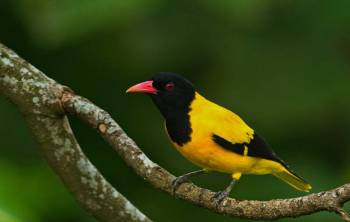 14D/13N
14D/13N
Bharatpur - Ranthambore - Agra - Pangot - Corbett - Kota
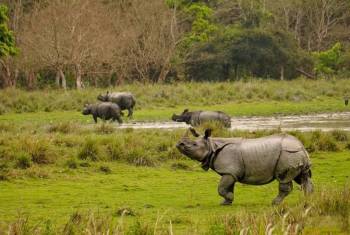 17D/16N
17D/16N
Exquisite Birds And Mammals Of Northeast..
Dibrugarh - Guwahati - Tinsukia - Kaziranga - Dibang
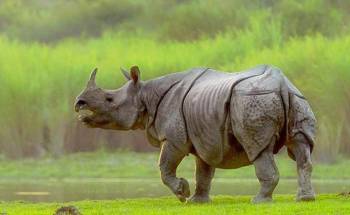 7D/6N
7D/6N
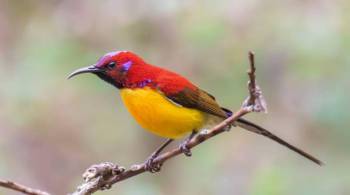 8D/7N
8D/7N
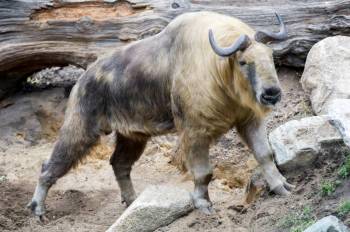 7D/6N
7D/6N
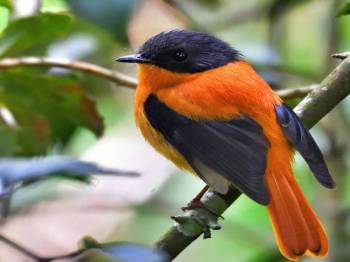 13D/12N
13D/12N
Central Himalayas Bird Tour - Uttarakhand
Pangot - Corbett - Almora - Pithoragarh
 6D/5N
6D/5N
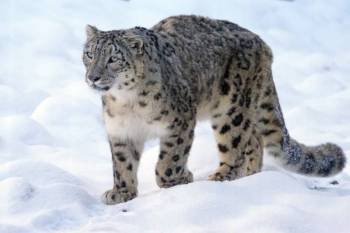 12D/11N
12D/11N
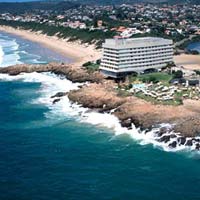 14D/13N
14D/13N
 14D/13N
14D/13N
Rajasthan - Land of Kings & Queens Tour
New Delhi - Agra - Jaipur - Ranthambore - Udaipur - Jodhpur - Bundi - Chittorgarh -..
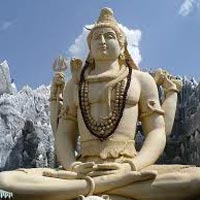 14D/13N
14D/13N
 14D/13N
14D/13N
New Delhi - Agra - Gwalior - Bhopal - Indore - Mumbai - Chhatarpur - Tikamgarh - Au..
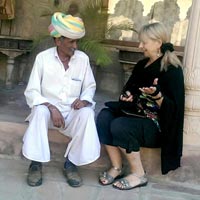 14D/13N
14D/13N
New Delhi - Mandawa - Bikaner - Gajner - Jodhpur - Kumbhalgarh - Chittorgarh - Bund..
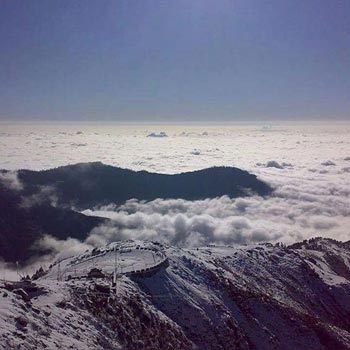 14D/13N
14D/13N
Guwahati - Shillong - Tawang - Kaziranga - Kohima - Imphal - Silchar - Cherrapunji ..
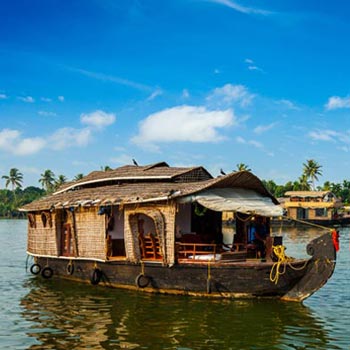 14D/13N
14D/13N
Munnar - Thekkady - Alleppey - Thiruvananthapuram - Kovalam - Kanyakumari - Kochi
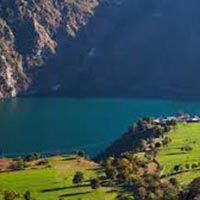 14D/13N
14D/13N
New Delhi - Shimla - Dharamshala - Dalhousie - Chandigarh City
 14D/13N
14D/13N
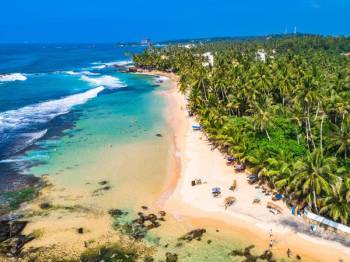 7D/6N
7D/6N
6Nights Sri Lanka - Kandy - Nuwara Eliya..
Colombo - Kandy - Nuwara Eliya - Bentota
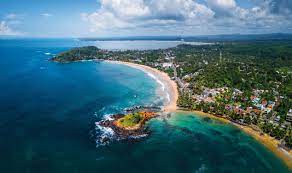 8D/7N
8D/7N
Sri Lanka Group Explore Ex - Delhi Tour
Nuwara Eliya - Bentota - Colombo - Kandy
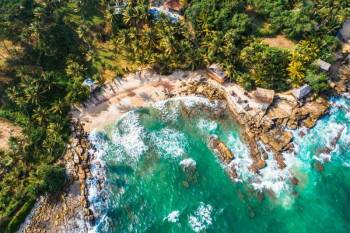 6D/5N
6D/5N
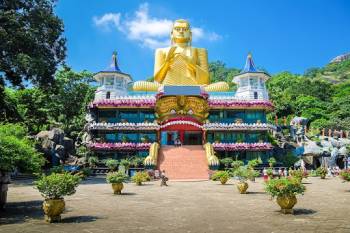 7D/6N
7D/6N
Sri Lanka Tour Package from Trichy - Che..
Bentota - Yala - Colombo - Anuradhapura - Dambulla - Nuwara Eliya - Kandy
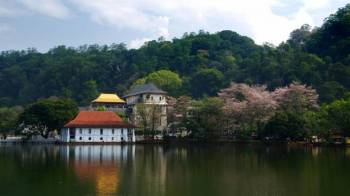 5D/4N
5D/4N
 6D/5N
6D/5N
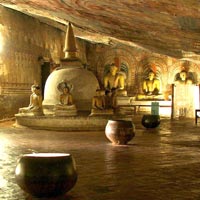 6D/5N
6D/5N
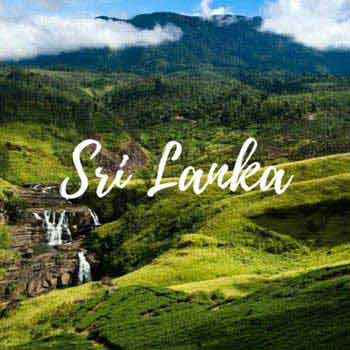 5D/4N
5D/4N
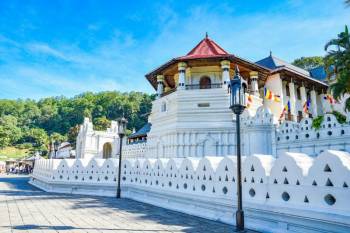 4D/3N
4D/3N